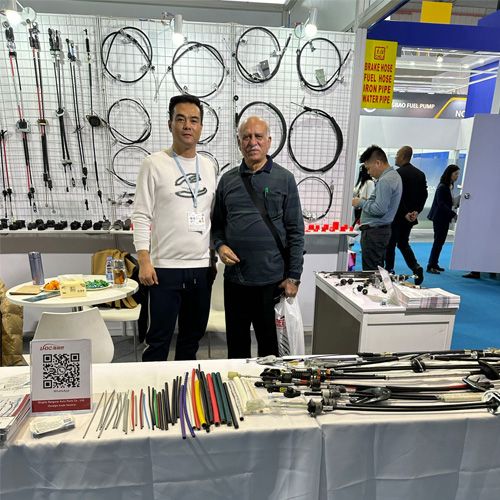Optimizing Throttle Rod Performance for Enhanced Vehicle Response and Efficiency in Automotive Design
Understanding the Throttle Rod A Key Component in Engine Performance
The throttle rod is an integral part of many internal combustion engines, playing a crucial role in regulating the flow of air into the engine. This article delves into the function, significance, and technical aspects of throttle rods, highlighting their importance in both conventional and advanced automotive systems.
What is a Throttle Rod?
A throttle rod is a mechanical linkage that connects the accelerator pedal to the throttle body in an engine. When the driver presses the accelerator pedal, the throttle rod moves, allowing more air to enter the engine, which increases power output. This mechanism is fundamental to the operation of traditional gasoline engines and remains relevant even in modern vehicles equipped with more advanced technologies.
How Does It Work?
When the driver engages the accelerator pedal, a series of movements are initiated. The throttle rod, which can be a simple metal rod or a more complex assembly in modern vehicles, transfers this motion to the throttle body. The throttle body houses a butterfly valve that opens and closes in response to the throttle rod's movement. When the valve opens, more air is allowed to enter the engine's combustion chamber, which, when mixed with the appropriate amount of fuel, ensures optimal combustion and power generation.
The responsiveness of the throttle rod is critical. A well-tuned throttle system allows for smooth acceleration and deceleration, contributing to a better driving experience. Conversely, a malfunctioning throttle rod can lead to sluggish performance, unpredictable engine behavior, and even dangerous driving conditions.
Types of Throttle Control Systems
throttle rod

While traditional throttle rods are purely mechanical, modern vehicles often employ electronic throttle control (ETC) systems. In these systems, the throttle position is monitored and controlled electronically rather than through mechanical means. An electronic sensor detects the position of the accelerator pedal and sends a signal to an engine control unit (ECU), which then adjusts the throttle opening accordingly.
This transition from mechanical to electronic systems has several benefits, including improved efficiency, reduced emissions, and enhanced responsiveness. However, this also means that the throttle rod's role has been somewhat diminished in modern contexts, being replaced or supplemented by sensors and actuators.
Importance of Maintenance
For vehicles still utilizing mechanical throttle rods, regular maintenance is essential to ensure optimal performance. Over time, throttle rods can experience wear and tear, leading to issues such as binding, improper alignment, or even complete failure. Regular inspections can help identify these problems before they escalate, allowing for timely adjustments or replacements.
In electronic systems, while the physical throttle rod may be absent, the importance of maintaining the sensor and actuator systems remains paramount. Issues with electronic components can lead to symptoms similar to mechanical failures, making it crucial for drivers to understand and address these needs.
Conclusion
In conclusion, the throttle rod plays a significant role in an engine's performance, acting as a bridge between the driver's input and the engine's response. Whether in traditional mechanical systems or advanced electronic setups, the principles of controlling air intake remain fundamental to achieving efficient and powerful engine operation. Understanding the function and significance of the throttle rod not only empowers drivers to appreciate their vehicles more but also emphasizes the importance of regular maintenance in ensuring peak performance. In an age where technology continues to evolve, the principles behind throttle control remain timeless, underscoring the connection between driver intent and machine response.
-
Clutch Line: Braided, Leak-Proof, OEM-Grade PerformanceNewsNov.10,2025
-
Throttle Cable: Durable, Smooth Control & Universal FitNewsNov.10,2025
-
Throttle Cable: Durable, Smooth, Universal Fit, Easy InstallNewsNov.10,2025
-
Clutch Line: Durable, Leak-Proof, OEM-Grade PerformanceNewsNov.10,2025
-
Hand Brake Cable | Custom, Universal & Trailer SolutionsNewsNov.10,2025
-
Clutch Line: High-Pressure, OEM-Fit, Corrosion-ResistantNewsNov.03,2025
